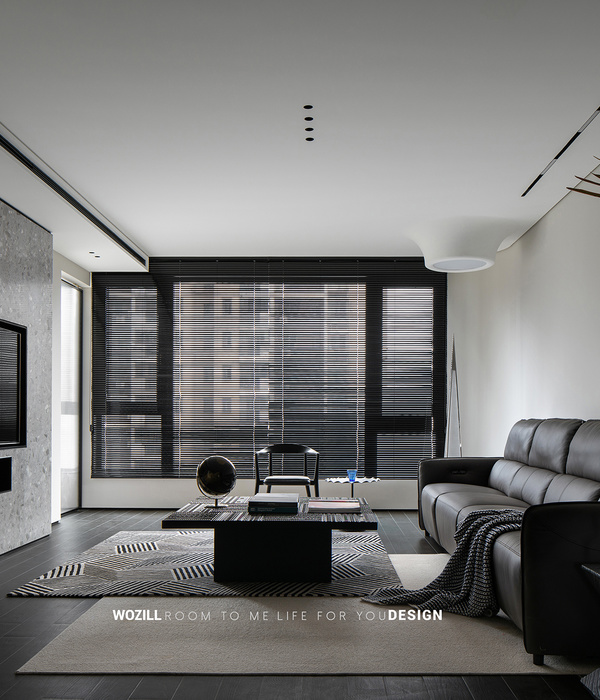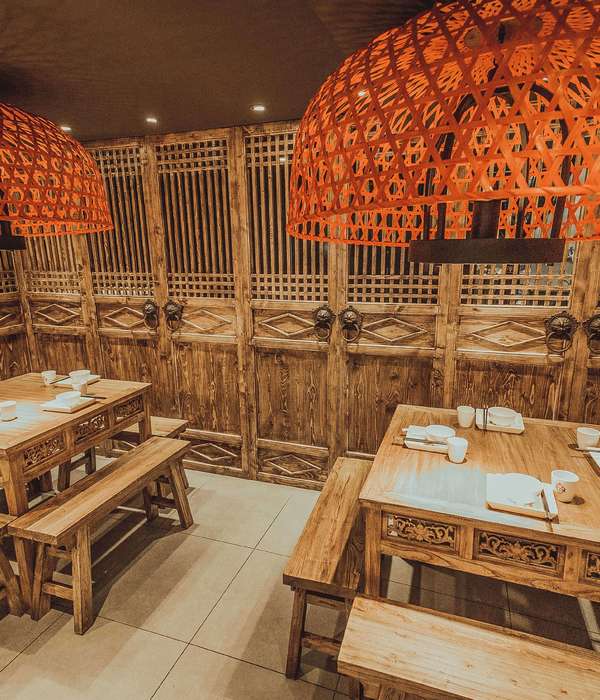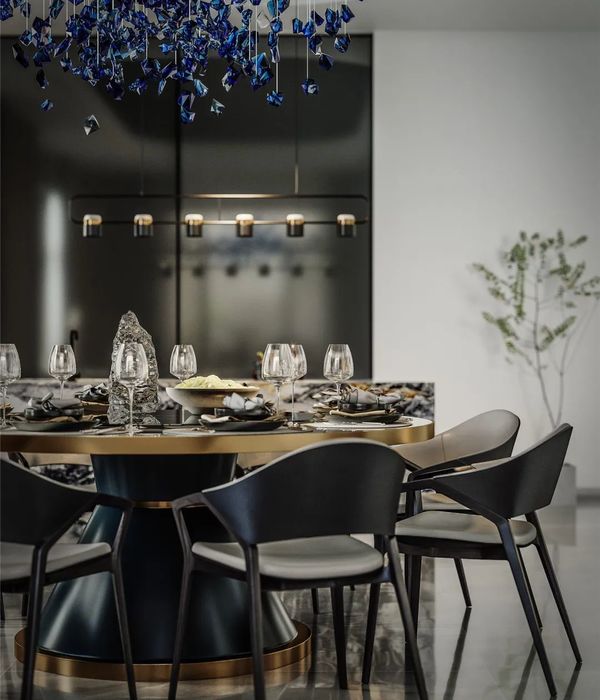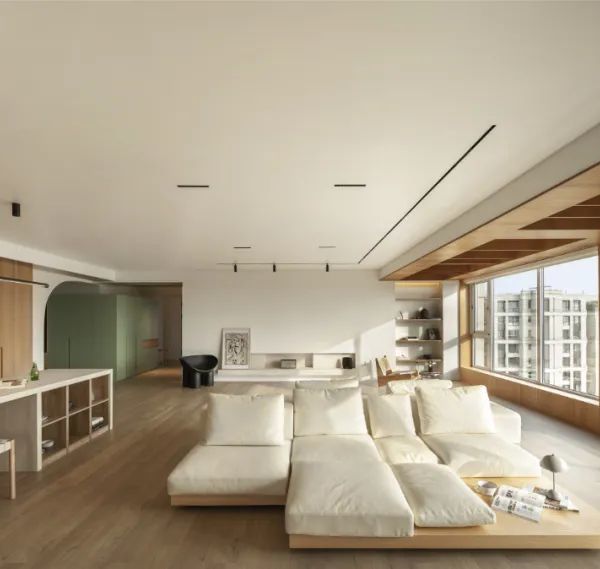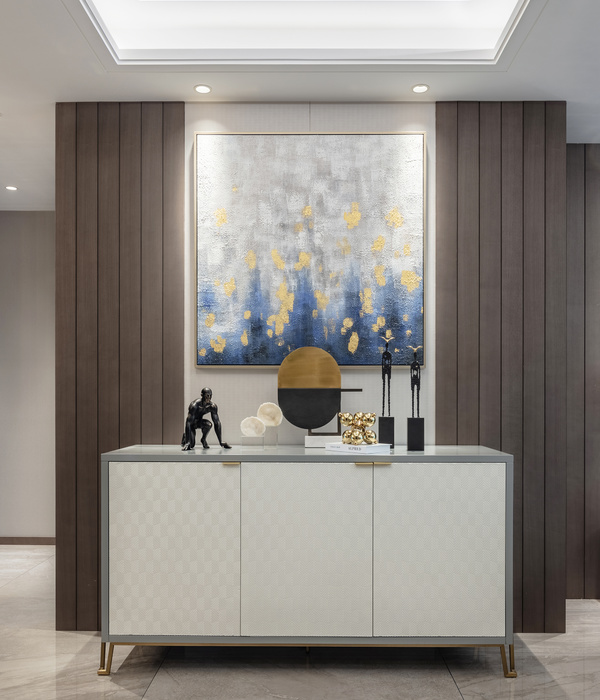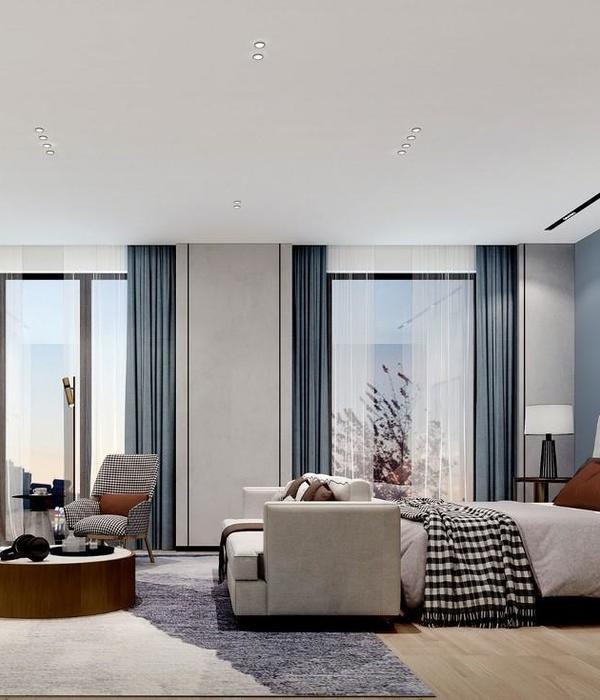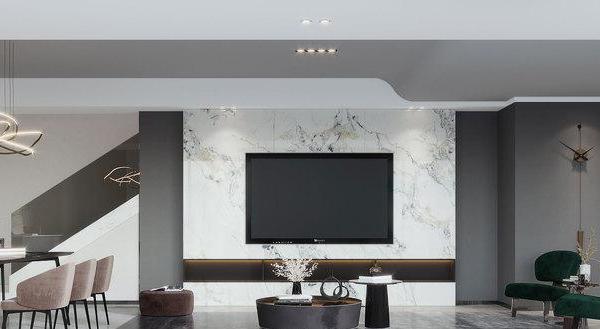架构师提供的文本描述。这座房子位于塞尔维亚西部马尔金山坡上,靠近著名的旅游胜地DivčIbury。地块虽已被小松树覆盖,但仍保留了原野的性质,为了尽量减少对场地的干扰,并参照周围的丘陵地形,将房屋建在山坡上。
Text description provided by the architects. The house is located near the popular tourist resort Divčibare, on the slope of Mount Maljen in western Serbia. Although the plot has been overrun with small pine trees, it still bears the original character of the open field. To minimize disturbance to the site and as a reference to the surrounding hilly terrain, the house is built into the hillside.
© Relja Ivanić
(C)Relja Ivanić
设计由两个主要的单片卷,光
Designed by combining the two main monolithic volumes, light & dark. These forms merge with the natural environment of low pine vegetation and steep rocky terrain. On the south side, the white portion of the house connects to the outside through a grand picture window, which guides the transition from the artificial to the natural.
© Relja Ivanić
(C)Relja Ivanić
这一边的外观用白色瓷砖完成,强调了它的形式,并借鉴了厨房、餐饮和生活区的内部功能。白色包层使这个体积抽象,与乡村环境相反。
This side's exterior is finished with white ceramic tiles, which emphasizes its form and gives reference to the interior function of combined kitchen, dining and living area. The white cladding makes this volume abstract and opposite to the rural surroundings.
Section a-a
A-a节
这幢房子的黑色部分从原来的山间住宅中汲取灵感,门廊的一侧被白色的音量所包围,形成了一个隐蔽的室外空间。在一楼是开放的卧室区域,提供完全的隐私,其他空间,结构是强调通过使用天然材料,如传统的木材板条覆层。
The black half of the house draws inspiration from original mountain homes. The porch is bounded on one side by the white volume, creating a sheltered outdoor space. Up on the first floor is the open bedroom area providing complete privacy from other spaces. The structure is emphasized through the use of natural materials such as the traditional timber shingle cladding.
© Relja Ivanić
(C)Relja Ivanić
通过房子的二重性,有两个主要的卷;其意图是融合传统和当代,以创造一个独特的审美和结构与其周围的环境。
Through the duality of the house, with two main volumes; the intent was to merge the traditional and the contemporary to create a unique aesthetic and a structure sympathetic to its surroundings.
Section b-b
b-b节
由于无法进入工地和预算相对较低,施工过程具有挑战性。材料的选择是在经济、耐久性和形式互补的基础上进行的。必须从当地森林中采购木材并利用其他当地材料。
The process of construction was challenging due to the inaccessibility of the site and the relatively low budget. The material selection was made based on an appreciation of economy, durability and to compliment the form. Sourcing timber from local forests and utilizing other local materials was a must.
© Relja Ivanić
(C)Relja Ivanić
{{item.text_origin}}

